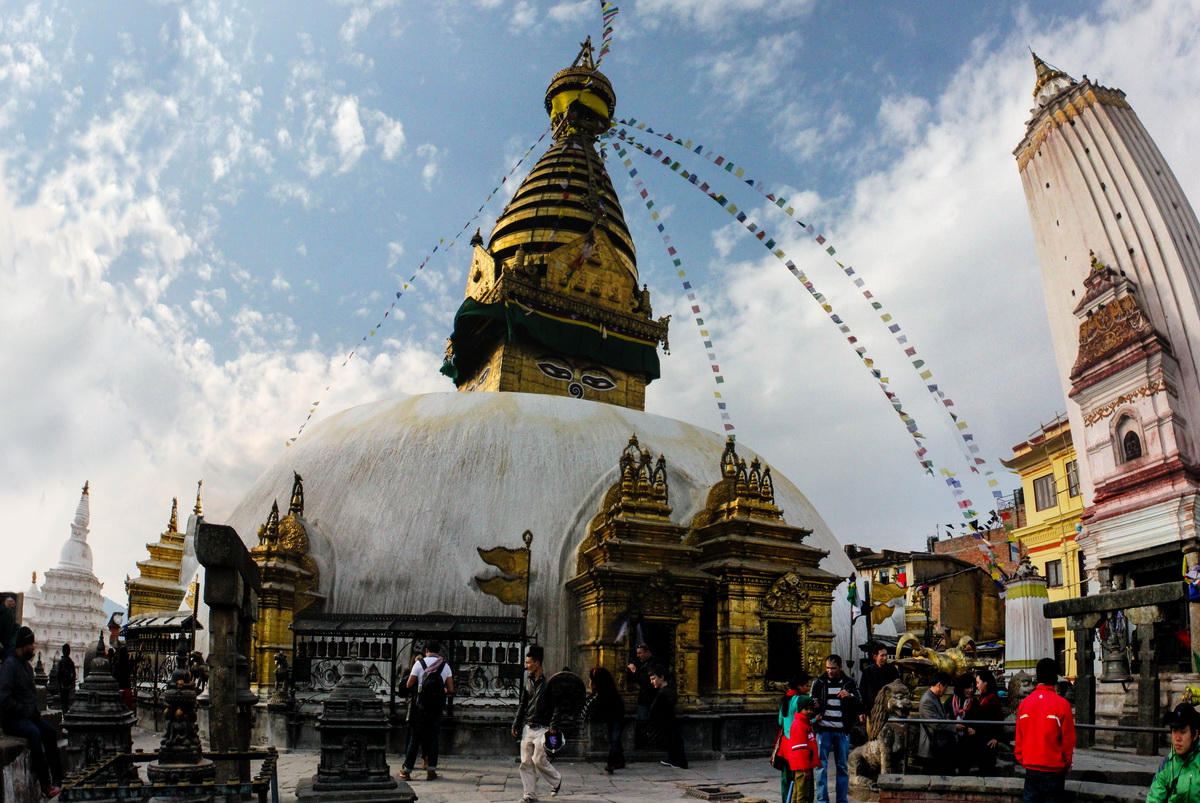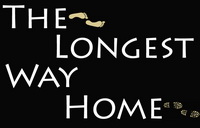

The unique and iconic Swayambhunath stupaJust under two kilometers west of Thamel perched on top of a hill is one of the must see highlights of Kathmandu city. Swayambhunath or Swayambhu is a unique looking stupa complex that you’ll briefly see in the latest Marvel movie Dr. Strange. It benefited from a recent renovation in 2010, was damaged again in the 2015 earthquake but still stands as if transported from another world today. It’s easily visited by foot from Kathmandu city or by taxi and is one of Nepal’s premier attractions. One of the side benefits of writing guidebooks to Nepal is that the research involved often reveals so much more to a place than just the main buildings. This is the case for Swayambhunath. Read on to truly make the most of your trip to the complex and get your full money’s worth when you visit! 365 steps to SwayambhunathThere are several ways into Swayambhunath. Today the main entrance is actually to the side where there’s a small parking lot. This is mainly used by visiting dignitaries, tour groups and monks in cars. For those with physical disabilities or health issues it also offers less steps to climb when visiting the stupa.  For me the real main entrance is to the east nearest to Kathmandu city. Here at the base lie 365 wide stone steps leading to the top. Along the way you’ll see many stone chaitya and there will be several people with little souvenir stalls. You’ll also get your first introduction to the hundreds of rhesus monkeys that live here. Why Swayambhunath is called the monkey templeThe nickname “Monkey Temple” is said to have come about when Manjushree, the bodhisattva of wisdom and learning, was creating the hill on which the temple stands when he decided to grow his hair long. From his hair came lice which transformed into monkeys that have inhabited the temple to this day. *caution: the monkeys of Swayambhunath should not be touched or fed. They can be aggressive and are used to tourists so are anything but afraid. Shiny objects should be hidden and bags closed. I’ve come across many a tourist that’s lost a camera, watch or mobile phone to a monkey!  Visiting the Swayambhunath stupaAt the top of the 365 steps you get a ticket to the left, a few steps more and you are in front of the massive Vajra (lightning / thunderbolt or lock) to the stupa. Protocol dictates your should circle the stupa clockwise so take a left at the Vajra. This actually works out well as to the left is a small alcove and viewing platform.  From here you get great views of the stupa and directly behind you of the Kathmandu Valley. There is a written testament that suggests King Varsadeva built a temple here at the beginning of the 5th century. There is also a damaged stone tablet at the site which confirms that King Mānadeva had work done here in 640AD. Circle the monkey templeIf you are a big culture and historical lover then my suggestion is you first circle the stupa and take in all its glory and detail before making a second circle around taking in all the surrounding buildings. If you are not that interested in culture or the buildings then you can speed things up by doing it all in one circle.  The dome of the white stupa itself is said to be solid. It’s also here that you will notice the giant buddha eyes that are painted on all four sides of the upper portion of the stupa. While many call these the eyes of Buddha there is little agreement on who or what they mean. The eyes first appeared in the 16th century so they are relatively new. Surrounding the stupa are brass prayer wheels which can be spun to bring good fortune when om mani padme hum (“hail to the jewel in the lotus”) is recited. You might recognize the verse from the many souvenir stalls and shops that play it out from their stores around Kathmandu and beyond. Buildings and monuments around Swayambhunath stupaAll around the stupa are a bevy of monuments, buildings and statues that few people visit. Collectively they make up a cultural value on par with the stupa itself. Some of the smaller shrines join together to form elements of earth and others are dedicated to Hindu gods. It’s a fascinating collection that makes Swayambhunath a unique world heritage site. Symbols of the five elementsThe first earthly element is located to the left when facing the stupa. It’s a small building that contains one of the five elements placed in cardinal points around Swayambhunath.  This one is dedicated to Vasupura (earth). The other symbols (marked on the map in my guidebook to the Kathmandu Valley) around the stupa include: Vayupura (air), Nagpura (water), Agnipura (fire) and Shantipura (sky). Each symbol also represents a different aspect of Buddhism. What’s more each of the cardinal points have female counterpoints who represent wisdom and thusly should be united with their male opposites so enlightenment can be reached. Swayambhu Buddhist MuseumBehind the stupa to the left is a small Buddhist Museum which is free to enter. It was slightly damaged in the earthquake but remains open. Inside the single room is a collection of Buddha statues and ornaments discovered around the compound over the years. Beside the museum is a small two-storey prayer hall that was badly damaged in the earthquake and needs to be reconstructed. Hariti Temple (Ajima Temple) |







Fascinating stuff. Not the type of info you’d get in a guidebook. Well done.
Take a read of the best guidebook to Nepal, it’s in there!
National Geographic could not have done a better job! I was just reading about the different elements at the temple. Nepal seems to have such a different background than just Buddhists!
Thank you Niamh. Yes, Nepal is a blend of many different cultures and religions. Predominately Hindu, Buddhist and Newari. It’s one of the few places in the world to see such a blend.
It’s interesting about the black Buddha there. I do hope these items are protected out in the open. They survived the earthquake but perhaps not the environment.
The black statue is covered in an alcove. So it’s reasonably protected. Good points though!
I have your guidebook and compared it to this. Really good. I would like to know if there is tour company in Kathmandu that can also tell us and show us these things at this level?
Hi Carlos, thanks for getting my guidebook. Do be careful about booking heritage tours in Kathmandu. I’ve not found anyone that does in-depth culture like you’ll find in my book. Most do the basics and claim to do the rest. A DIY tour is what I suggest.If you are stuck then check out my free heritage tours in Kathmandu guide travel planning services to Nepal.
Very good documentation. It’s been a good evening read.
Glad you enjoyed.
We plan to visit next year in April. Will it be very wet then?
It’s spring so there will be showers but nothing too heavy. It’s a great time of year to visit. Do see when to visit Nepal.
I really enjoyed this. There’s always more to a place than the main attraction!
Glad to hear. There always is!
So how much trouble did you get for photographing the Ajima temple! Kidding.
It’s so interesting that they have different religious temples in the same place. Why is that?
None! That’s the back of the Ajima temple, it’s the front you can’t photograph.
The Kathmandu Valley was founded by people who became the Newari a blend of Hindus and Buddhists who developed their own ethnic ways. It was during the Malla reign that built most of the glorious temples you see today.
Are these things easy to find around the temple?
Very easy. They are all within a few steps of the stupa. See my Nepal guidebook for maps and more information.
Great, that temple is looking so good and it is one of the best temple of nepal. i really like beauty of that temple and so stunning photos you shared.
Thanks, yes it’s a stunning stupa. More a stupa than temple!